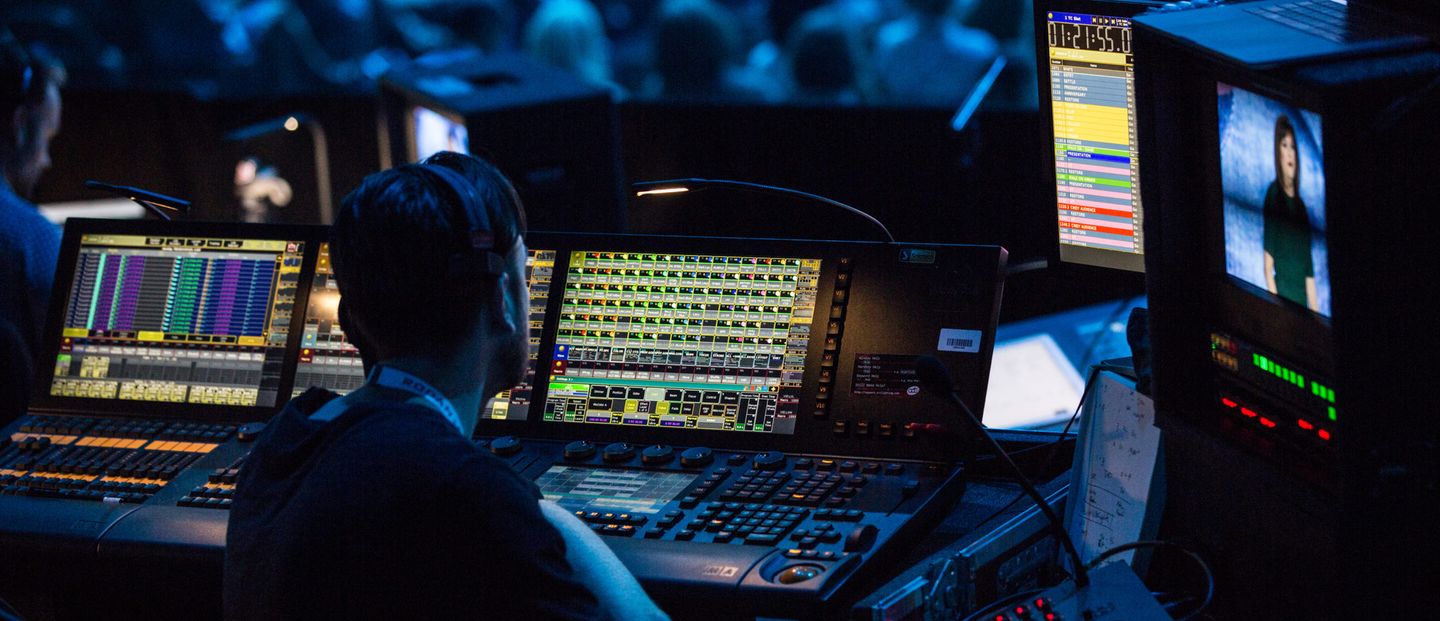Future trends for production companies in charlotte nc
Comprehending Exactly How Production Companies Operate: An Overview to Their Process and Offerings
Production companies play a vital role in bringing creative visions to life. Their procedures incorporate different stages, from the initial concept advancement to the last distribution of a task. Each phase calls for careful preparation and control to assure success. Understanding these procedures can clarify the complexities behind the scenes. What variables affect decision-making at each phase, and how do they ultimately form the last product?
The Concept Development Phase
The concept development stage acts as the structure of any type of successful manufacturing. Throughout this stage, concepts are created, improved, and crystallized into a systematic vision. Production teams involve in brainstorming sessions, exploring various motifs and stories that reverberate with target audiences. This phase calls for collaboration amongst producers, supervisors, and authors, that collectively assess the expediency and market capacity of these principles.
Trick aspects consist of developing the target, tone, and style demographic, which assist the imaginative process. Study plays an important role, as teams examine patterns and target market choices to inform their decisions. In addition, initial budgeting and resource analyses start, ensuring that the idea straightens with available abilities - production companies in charlotte nc. By the end of this stage, a solid idea arises, prepared for the subsequent phases of development. This foundation is vital for navigating the intricacies of production, eventually setting the stage for a job's success
Pre-Production Planning and Sychronisation
After strengthening the idea, manufacturing teams move right into pre-production preparation and sychronisation, a critical stage that entails arranging the logistics required for bringing the vision to life. Throughout this stage, numerous aspects collaborated, consisting of manuscript completion, casting, place scouting, and spending plan monitoring. Groups develop timelines to assure that all facets of the job line up with the desired shooting routine.
Additionally, manufacturing organizers safe authorizations and insurance coverage, while communicating with team participants and suppliers to validate accessibility and sources (production companies in charlotte nc). This phase likewise emphasizes interaction, as cooperation amongst directors, producers, and division heads is vital for smooth operation
Comprehensive planning assurances that potential difficulties are identified and resolved proactively, lessening disruptions during filming. Ultimately, reliable pre-production preparation lays the groundwork for a successful shooting experience, guaranteeing that all parts remain in area to fulfill the imaginative vision.
Production: The Filming Process
Filming transforms the carefully prepared vision into fact, capturing performances, visuals, and audio in a cohesive fashion. This phase includes the collaboration of numerous divisions, including manufacturing, cinematography, and audio layout, each adding to the total visual and narrative. The director guides the stars, ensuring their efficiencies line up with the intended emotional tone, while the cinematographer captures the activity with thoroughly selected shots and lighting techniques.

Post-Production: Editing and Completion
As soon as the shooting process is complete, the focus shifts to post-production, where the raw footage is transformed right into a refined last item. This stage includes a number of essential steps, starting with editing, where editors sift via hours of video footage to pick the most effective takes and construct them into a systematic narrative. They function very closely with supervisors to ensure the vision is recognized.
Audio layout is an additional important aspect, as audio tracks are improved, music is included, and audio results improve the checking out experience. Shade adjustment follows, ensuring aesthetic consistency and boosting the mood of the movie. Visual results, if required, are incorporated effortlessly to produce immersive scenes.
Lastly, the film undertakes a quality control procedure, inspecting for any kind of technical issues. This careful interest to information in post-production ultimately forms the end product, preparing it for the following stages of release and target market engagement.

Distribution and Advertising And Marketing Techniques
A reliable distribution and advertising and marketing approach is essential for a movie's success, as it determines exactly how widely the movie reaches its desired audience. Production companies usually work together with representatives to develop a release plan, choosing platforms such as cinemas, streaming solutions, or digital downloads. A well-timed theatrical launch can optimize box office profits, specifically when lined up with movie events or seasonal fads.
Advertising and marketing efforts typically consist of trailers, social media sites campaigns, and advertising events to produce buzz. Target market analysis plays a crucial role in crafting customized messages that reverberate with prospective customers.
Furthermore, collaborations with influencers or sponsorships can amplify visibility. The performance of these methods is determined via metrics like ticket sales and online involvement, informing future projects. Inevitably, a natural distribution and advertising and marketing approach not only enhances a movie's presence but likewise adds considerably to its total profitability and long life out there.
Often Asked Questions
Exactly How Do Production Companies Secure Funding for Projects?
Production companies safe and secure financing with numerous methods, consisting of pre-sales, gives, personal investors, crowdfunding, and collaborations with distributors or studios - production companies in charlotte nc. These methods allow them to finance projects and manage monetary dangers efficiently throughout production
What Functions Do Directors and producers Play in a Production?
Producers oversee task growth, budgeting, and logistics, making certain resources are offered. Directors concentrate on the imaginative vision, assisting stars and staff to accomplish the preferred imaginative result, shaping the narrative and overall manufacturing quality.
How Are Casting Choices Produced a Project?
Casting choices are normally made with tryouts, where supervisors and manufacturers assess actors based on their performance, suitability for functions, and chemistry with various other cast participants, commonly influenced by company referrals or previous partnerships.
What Is the Ordinary Timeline for Finishing a Film?
The average timeline for completing a movie typically varies from one to 3 years. This includes pre-production, filming, and post-production stages, with each phase varying substantially based on project scale and intricacy.
Exactly How Do Production Companies Choose Places for Filming?
Production companies pick filming locations based upon aspects like script needs, budget plan restrictions, availability, and aesthetic charm. They often perform location scouts to review possible websites and consider logistical facets such as authorizations and area assistance. ## Recognizing How Production Companies Operate: A Guide to Their Refine and Offerings.
Production companies play a vital role in bringing creative visions to life. Their operations incorporate different stages, from check the preliminary principle development to the last circulation of a project. Each phase requires mindful preparation and sychronisation to assure success. Comprehending these procedures can clarify the complexities behind the scenes. What variables affect decision-making at each stage, and just how do they inevitably form the end product?
The Idea Development Phase
The principle development stage works as the foundation of any successful manufacturing. During this phase, ideas are created, improved, and taken shape into a systematic vision. Production groups take part in brainstorming sessions, exploring various motifs and stories that resonate with target audiences. This phase needs cooperation among supervisors, authors, and producers, that jointly evaluate the usefulness and market capacity of these ideas.
Key components include developing the category, tone, and target demographic, which guide the creative procedure. Research plays an important duty, as teams analyze patterns and audience choices to notify their choices. Furthermore, first budgeting and source evaluations start, making certain that the idea aligns with readily available capacities. By the end of this stage, a strong principle arises, ready for the subsequent phases of advancement. This groundwork is crucial for steering the intricacies of manufacturing, ultimately establishing the phase for a job's success.
Pre-Production Preparation and Coordination
After strengthening the concept, manufacturing teams relocate into pre-production planning and sychronisation, an essential phase that involves arranging the logistics necessary for bringing the vision to life. Throughout this stage, numerous elements article source integrated, consisting of manuscript finalization, casting, location hunting, and spending plan administration. Teams establish timelines to ensure that all aspects of the job line up with the desired shooting schedule.
Furthermore, production organizers safe and secure licenses and insurance coverage, while liaising with crew participants and suppliers to confirm schedule and resources. This phase likewise stresses interaction, as cooperation among supervisors, producers, and division heads is essential for smooth procedure.
Comprehensive preparation assurances that possible obstacles are identified and dealt with proactively, lessening disruptions throughout filming. Inevitably, reliable pre-production planning prepares for a successful capturing experience, making certain that all parts are in place to fulfill the imaginative vision.
Production: The Filming Refine
Shooting transforms the carefully intended vision right into truth, catching efficiencies, visuals, and sound in a cohesive way. This phase involves the partnership of different departments, including manufacturing, cinematography, and noise style, each contributing to the total visual and narrative. The director overviews the actors, guaranteeing their efficiencies straighten with the intended emotional tone, while the cinematographer captures the action through carefully selected shots and illumination techniques.
During recording, schedules are firmly adhered to, as time and resources are commonly limited. Each scene is shot several times to accomplish the preferred high quality, with attention provided to framing, connection, and audio clearness. The production group works faithfully behind the scenes, managing tools, collaborating places, and dealing with any unpredicted obstacles. This dynamic atmosphere cultivates imagination and flexibility, ultimately generating the raw video that will later on be refined in post-production, establishing the phase for the final product.
Post-Production: Modifying and Completion
When the filming procedure is full, the focus moves to post-production, where the raw footage is transformed into a polished last item. This stage includes a number of crucial steps, starting with editing, where editors look with hours of video to choose the best takes and construct them into a meaningful story. They work carefully with supervisors to guarantee the vision is recognized.
Audio design is another important facet, as audio tracks are improved, songs is added, and sound results improve the viewing experience. Color correction follows, guaranteeing aesthetic uniformity and boosting the state of mind of the movie. Visual results, if needed, are integrated seamlessly to develop immersive scenes.
The film undergoes a quality control process, examining for any kind of technical issues. This careful interest to information in post-production eventually shapes the last product, readying it for the following phases of launch and target market involvement.
Circulation and Advertising And Marketing Approaches
A reliable circulation and marketing approach is crucial for a film's success, as it figures out exactly how extensively the film reaches its desired audience. Production companies typically collaborate with distributors to establish a release plan, selecting platforms such as movie theaters, streaming solutions, or digital downloads. A well-timed theatrical launch can make the most of box office income, particularly when straightened with movie celebrations or seasonal trends.
Marketing initiatives usually include trailers, social media projects, and promotional occasions to produce buzz. Target audience analysis plays a vital duty in crafting tailored messages that resonate with possible visitors.
Furthermore, partnerships with influencers or sponsorships can magnify presence. The performance of these techniques is measured with metrics like ticket sales and online interaction, notifying future campaigns. Inevitably, a natural circulation and advertising and marketing strategy not just improves a movie's exposure yet additionally contributes considerably to its total earnings and durability on the market.
Regularly Asked Concerns
How Do Production Companies Secure Funding for Projects?
Production companies secure funding look here through various ways, consisting of pre-sales, gives, exclusive capitalists, crowdfunding, and partnerships with workshops or distributors. These methods permit them to finance jobs and handle economic dangers properly throughout manufacturing.
What Roles Do Producers and Supervisors Play in a Production?
Producers oversee project development, budgeting, and logistics, making sure sources are readily available. Directors concentrate on the imaginative vision, guiding stars and staff to attain the preferred imaginative end result, forming the story and general production high quality.
How Are Casting Decisions Made for a Project?
Casting decisions are usually made through tryouts, where supervisors and producers review stars based on their performance, viability for functions, and chemistry with other cast members, typically affected by firm referrals or previous collaborations.
What Is the Typical Timeline for Completing a Film?
The average timeline for completing a film commonly ranges from one to 3 years. This includes pre-production, filming, and post-production stages, with each stage varying substantially based upon task range and complexity.
Just How Do Production Companies Choose Areas for Shooting?

Production companies select filming areas based upon variables like manuscript demands, spending plan restrictions, ease of access, and aesthetic allure. They usually perform location scouts to examine prospective websites and take into consideration logistical aspects such as licenses and community assistance.
After strengthening the principle, manufacturing teams relocate right into pre-production planning and control, a vital phase that involves arranging the logistics needed for bringing the vision to life. Production companies choose recording locations based on variables like script needs, spending plan restraints, access, and aesthetic allure. The principle advancement phase offers as the structure of any type of successful manufacturing. After strengthening the concept, manufacturing teams move right into pre-production planning and coordination, a critical stage that involves arranging the logistics needed for bringing the vision to life. Production companies choose recording locations based on aspects like manuscript needs, spending plan constraints, ease of access, and aesthetic allure.